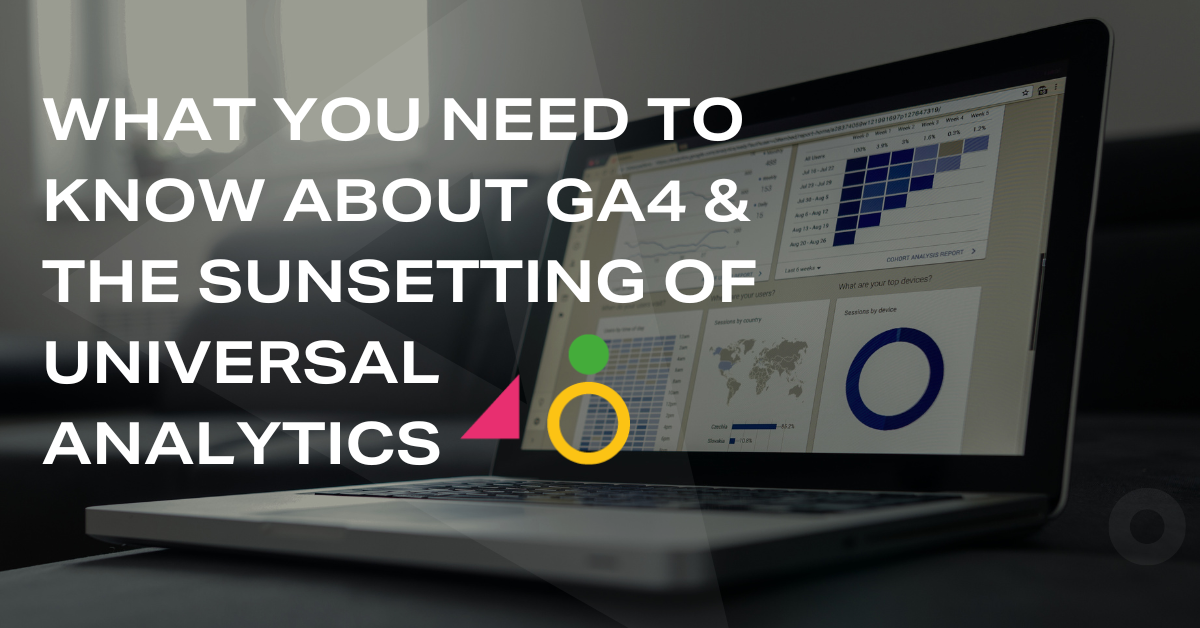
Debunking the Myths of Ecommerce #3: Big Data
Big data remains a hot topic in business, particularly in the world of retail and ecommerce. Space 48’s Managing Director, Jon Woodall, explores some of the misconceptions surrounding big data and separates the myths from the reality in our latest blog.
Big Data: the myth vs the reality
The Myth: Data does the work for us and will tell us all we need to know.
The Reality: Data can be interpreted in so many ways, so your ecommerce strategy still requires intuition, instinct and effective evaluation.
Big data can give you big headaches. Data analytics is not everyone’s strength, so when discussing terms like data-centric, data-driven, data-focused, etc, it can become a little overwhelming. Having a fancy set of data analytics tools, CRM platforms and even integrations with AI technology, doesn’t mean you’re suddenly going to be able to transform your ecommerce performance. You need the right people, using the right tools, to make the data work for you.
Let’s explore the ways brands can utilise big data effectively and break down the misconceptions, to be more realistic about what can be achieved through data analytics.
Don’t get swamped by your data
The challenge with data analytics is not to become overwhelmed or overloaded by your data. That’s not a nice feeling, but it can easily escalate if you’re trying to analyse too much all at once. If this is affecting you, it may well be that you’re delving too deep into your data at an early stage, rather than focusing on each area of your ecommerce activity and performance.

I see this a lot with new ecommerce businesses. Start simple and expand your use of data analytics in line with your growth and experience of using data tools. Once you’ve got a good handle on the simple stuff, and you’ve seen meaningful results from changes you’ve from what the data has revealed, then you can increase the sophistication of your tools, reporting and analysis.
Interpreting your ecommerce data
Data, viewed in mass, can be very intimidating. As I’ve mentioned, too much data, too soon can bog you down, without helping you to reach any clear conclusions. Another danger with overloading yourself with data, is not being able to interpret the data effectively. Make sure you have the right people in place to evaluate and manage the data. Otherwise, you’ll wrongly identify issues, misrepresent problems and “fix” things based on assumptions.

Tackle your data with manageable frequency and volume, working with the right people within your business to analyse the data and evaluate your insights. Scale your data analytics, working with the tools and sophistication level that matches your business size and experience.
We recommend seeking external advice, perhaps from relevant ecommerce agencies, to help you review the stage of the ecommerce lifecycle you’re brand is at. No business is too small to be using data analytics, but it has to be used in the right way. It might be a cliche, but don’t run before you can walk. Interpreting your data is crucial to success with analytics.
Let’s take the scenario of a sharply dropping conversion rate. Consider whether your conversion rate has always been down at an equivalent point in time. If not, what has happened to cause this sudden dip in conversion rate? This is where you can delve more deeply into the data, to understand what caused that drop in conversions. Was it down to something in the merchandising part of your website? Have you made a recent change your pricing, shipping or promotions? Or is it something more technical; errors or broken links? Be intuitive and then utilise the different data sets and monitoring tools to diagnose your problem.
Consider these following metrics and ensure you have effective processes, resources and tools to interpret your data:
- Conversion rate
- Average order value (AOV)
- Year on year (YOY)
- Cost per acquisition (CPA) or cost of sale (COS)
- Customer lifetime value
Use your team and relevant tools to interpret the data across these different metrics, but tackle them separately to avoid confusion. Only then will you be able to make meaningful changes and establish how your optimisation impacts performance.
Learn more about the most important ecommerce KPIs in our blog: 5 essential key performance indicators (KPIs) for ecommerce.
Data analytics doesn’t have to be rocket science
Don’t buy into the myth that you need to be a maths whiz or data expert to understand analytics. You don’t! There are simply explained online video tutorials available, which will talk you through how to interpret data analytics tools and platforms, depending on your own aptitude.
Also, mastering data analytics doesn’t tell the whole story. There are countless outside influences that Google Analytics and other data analytics tools can’t account for, which means you still need old fashioned intuition. Even with AI tools and technology, machine learning still requires an automation framework to be implemented by real people.
Retailers can use artificial intelligence to predict what customers will react best to, based on data, just as marketers and analysts use insights to optimise performance. The optimisation process is all about combining strategy, testing, data and analysis. AI just has the power and sophistication that saves businesses a hell of a lot of time!
Use the right tools for the right purpose
There are lots of different tools and third-party solutions to help ecommerce businesses to make their data more actionable, for various different purposes. For example, you can use tools like Nosto for personalisation, Fresh Relevance for real-time email, paid social pixels (like Facebook Pixel) for retargeting campaigns, or Hotjar and FullStory for onsite performance optimisation.

These tools can do some the heavy-lifting and action your data efficiently and effectively. You’ll just need to monitor and manage performance, and stay agile. Don’t be over-reliant on these tools and think that it’s a case of set it and forget it.
One of your biggest data resources is your customer base itself, in terms of gathering quantitative and qualitative data. This requires reaching out to your customers via your marketing channels or using surveys. This data can be invaluable in identifying where your website might contain problems, bottlenecks or bad user experience, which might be impacting your conversion rate.
Because data sources and platforms collect data in different ways. Google Analytics will never pick up 100% of reliable data – there’s a margin of error of about 10% in terms of actual sales data, which then might not correlate to what you’re seeing in Google AdWords. That data might not then correlate to what you’re seeing in other tools you might use, such as Clickatell and FullStory (or other heat map monitoring programmes).
Let your data tell a story
Enable your data to tell a story of your ecommerce strategy. Big data has the capability to test your ecommerce offering and it can tell you more of a story than you think you know. You might need to bring someone experienced into the business, with the ability to draw all of your data together.
If you can’t tell your data’s story, it will just be overwhelming and meaningless to you and your company’s key stakeholders. Big data is there to work for you – not against you. Remember, start simple and look to become a master one analytics tool and one element of your ecommerce data.
Allow your data to tell a simple story, with meaningful insights that lead to optimising and improve performance in one area of your ecommerce activity. Then you can move on to the next, and so on, before finally being about to tell the whole story with your data.
Busting the myths of ecommerce.
Want to improve your ecommerce website’s user experience? Check out my recent blog on the myths of UX: Debunking the Myths of Ecommerce #2: User Experience.
Also, I appeared on Target Internet‘s digital marketing podcast discussing the top myths of ecommerce. Listen to my 2-part interview by clicking on the links below.

- 10 Ecommerce Myths with Jon Woodall (part 1)
- 10 Ecommerce Myths with Jon Woodall (part 2)
Summary
The great thing about big data, is that it gives businesses access to a wealth of information and behavioural insights to help you optimise your performance. Not managing or interpreting it effectively is a huge missed opportunity and will prevent you seeing the big picture of the state of your ecommerce strategy. If you want more advice about managing your data, you can book a free consultation with our ecommerce specialists and we can focus on your key challenges with data analytics.
{{cta(‘c3315ef3-5b55-4b0e-a346-93e834d5ec0e’,’justifycenter’)}}
Space 48 is a leading UK ecommerce consultancy, based in Manchester. We have a team of award-winning website developers and ecommerce experts, specialising in Magento and Shopware platforms. If you’d like to discuss any issues you’re experiencing with your ecommerce platform or you want to discuss a development project with us, get in touch. We’re here to help!





